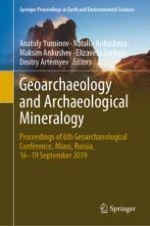This book presents general problems in geoarchaeology, and discusses geophysical solutions, X-ray fluorescence spectrometry applications, X-ray and isotope analyses and GIS technologies. It also examines practical reconstructions of technological processes used in ancient time, and investigates the use of minerals and rocks by ancient societies in the territories of modern Russia, Ukraine, Turkmenistan, and Tajikistan, as well as the characteristics of ores, metallurgical slags and data on the composition and impurities of archaeological metals. Intended for archaeologists, historians, museum workers and geologists studying noble metals and copper, the book is also a useful resource for students, graduate students, experts and anyone interested in the use of various minerals at different stages of humanity’s development.
